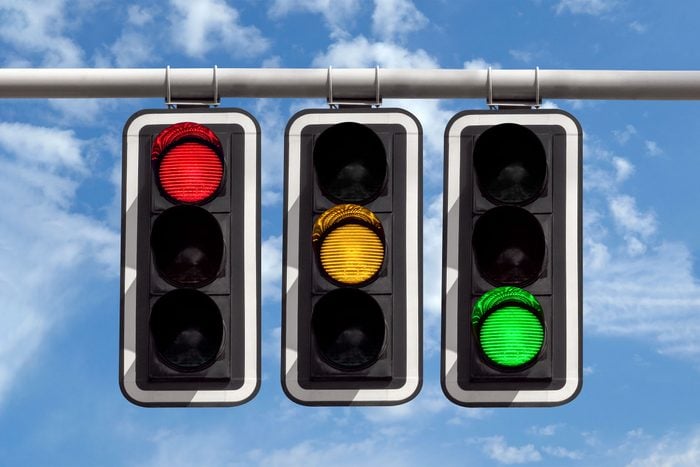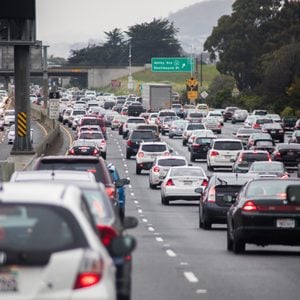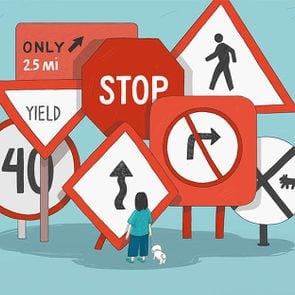This Is Why Traffic Lights Are Red, Yellow and Green
Updated: Jul. 12, 2023

There's a perfectly good explanation for those familiar traffic light colors
The idea that red means stop and green means go affects more than just traffic light colors and red light cameras. We have been taught from a young age that red means danger, while green means safety. But why were those particular colors chosen for traffic lights in the first place? For something we have to look at every day, why couldn’t they have been prettier colors, like magenta and turquoise? You’re about to find out.
While you’re in the mood to learn, here are even more interesting facts and explanations for other little things you’ve always wondered about.
When were the first traffic lights created in the United States?
The first traffic lights in the United States were installed because of an increase in travelers on the road in the 1920s. Worried about accidents, towns and cities installed traffic towers to help the flow of cars. Officers manned the towers, using whistles and red, green and yellow lights to indicate to drivers when they should stop and go.
Then, in 1920, William Potts created the first tricolor, four-directional traffic signal. It helped drivers stay safe at intersections. The very first four-directional traffic light was installed at Woodward Avenue and Fort Street in Detroit, Michigan.
But throughout the country, there were still a lot of systems for traffic lights and patterns in place. Since this could end up causing more problems for drivers, the Federal Highway Administration created the “Manual on Uniform Traffic Control Devices” in 1935. It set uniform standards for all road signs, pavement markings and traffic signals, requiring them to all use red, yellow and green light indicators.
What’s the history behind the colors?
It’s important to know that before there were traffic lights for cars, there were traffic signals for trains. At first, railroad companies used red to mean stop, white to mean go and green to mean caution.
As you can probably imagine, train conductors ran into a few problems with the color white meaning go—bright white could easily be mistaken for stars at night, with train conductors thinking they were all clear when they really weren’t. Railway companies eventually moved to the color green for go. And because it’s easily distinguishable from the other colors, yellow became the standard for indicating when trains should proceed with caution. It’s been that way ever since. On another note, if you’ve ever wondered, here is why the lines on the roads are yellow.
When traffic lights were put up, it became standard for them as well—except in Japan, where you’ll find an entirely different color that signals go.
Why was red chosen for stop?
Red is the color with the longest wavelength; that means that as it travels through air molecules, it gets diffused less than other colors, so it can be seen from a greater distance. For a real-world example, think about how the light turns red as the sun sets. Even though the human eye is most sensitive to a yellow-green highlighter color (hence the shade of high-visibility safety vests), it can see red from further away.
Yellow has a shorter wavelength than red but a longer wavelength than green. This means that red is visible the furthest away, yellow in the middle and green the least distance away—a helpful advanced warning for needing to slow or stop. But this could be a coincidence. Red meaning stop originated with train warning lights, and it’s not clear whether that was chosen based on wavelength, contrast against green nature or natural association of red with things like blood. It could be a combination of all three! Speaking of colors, read on to find out why this is the world’s ugliest color.
Believe it or not, yellow was once used to mean stop, at least as far as signage goes. Back in the 1900s, some stop signs were yellow because it was too hard to see a red sign in a poorly lit area. Eventually, highly reflective materials were developed, and red stop signs were born. Since yellow can be seen well at all times of the day, school zones, some traffic signs and school buses continue to be painted the color. Keep these safe driving tips in the back of your mind whenever you see a yellow light.
Next time you’re impatiently waiting at a traffic light, don’t get mad; employ these driving etiquette rules and know that traffic lights have certainly come a long way.
Get Reader’s Digest’s Read Up newsletter for more food, home and cleaning tips, travel, tech, humor and fun facts all week long.
Sources:
- The Henry Ford: “First Tri-Color, Four-Directional Traffic Signal, 1920”
- U.S. Department of Transportation: “Manual on Uniform Traffic Control Devices for Streets and Highways”
- NYPD History: “NYC’s Fifth Avenues Traffic Squad Signal Tower System – State of the Art for the 1920s”
- NASA Science: “Visible Light”
- Met Office: “Why is the sunset red?”



